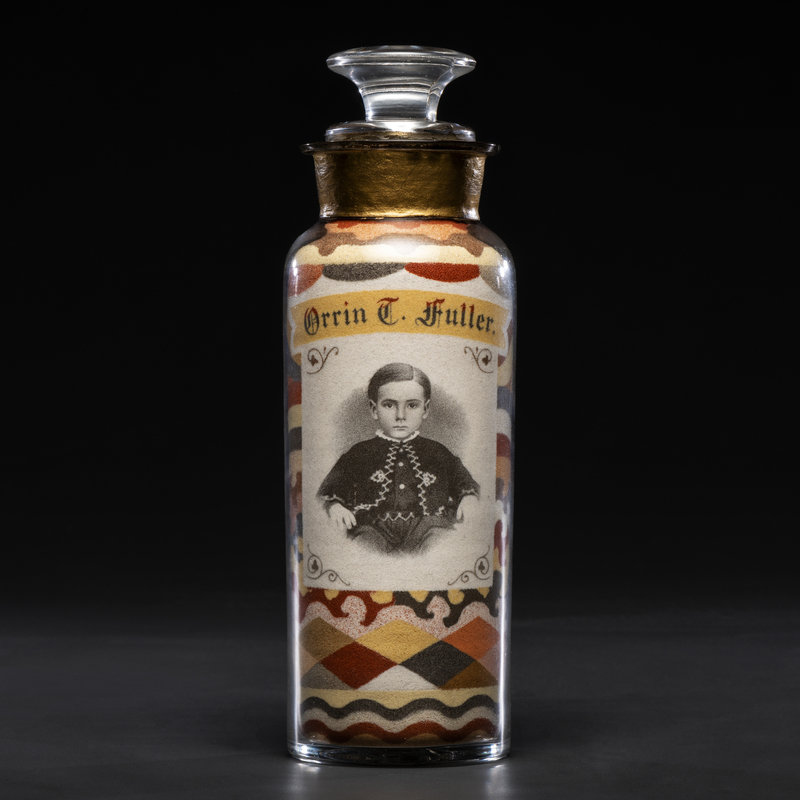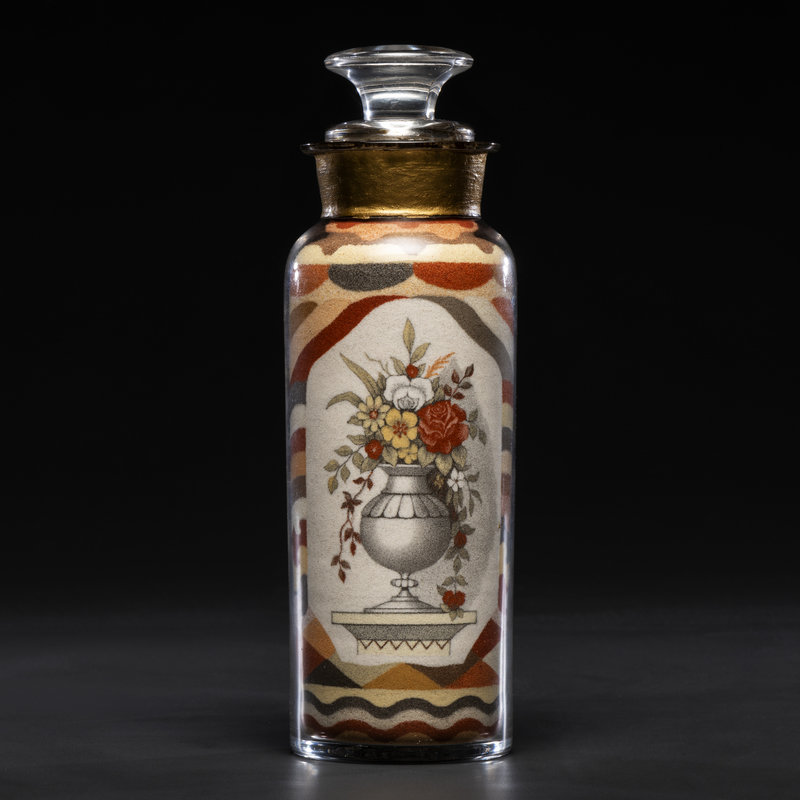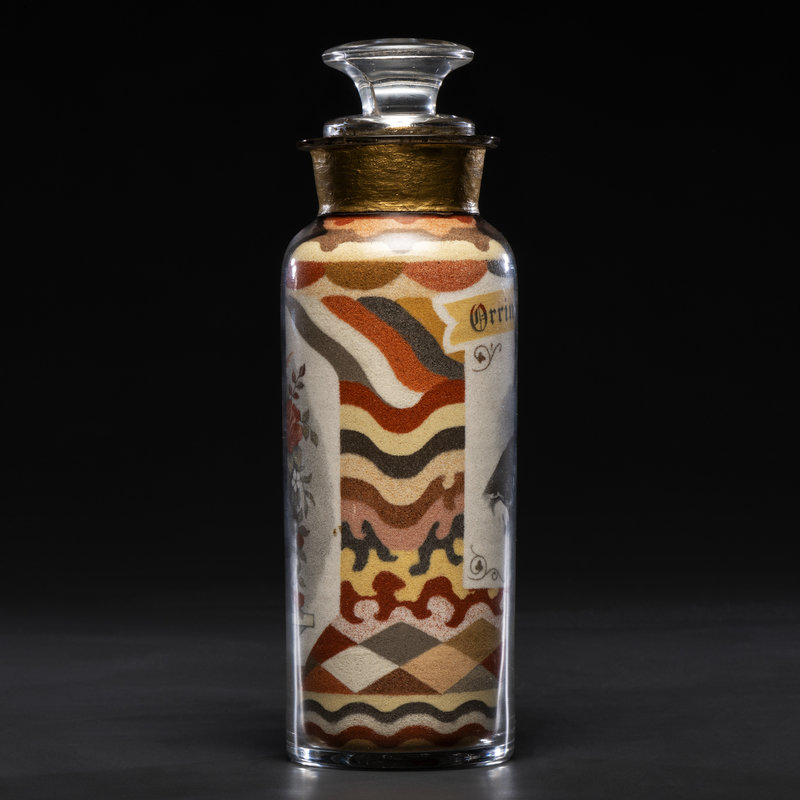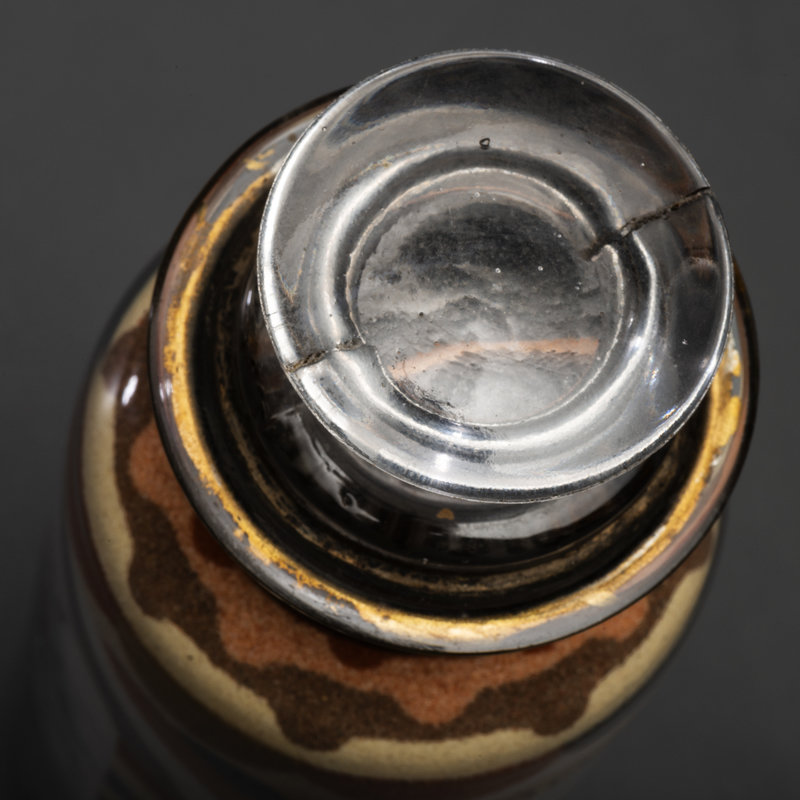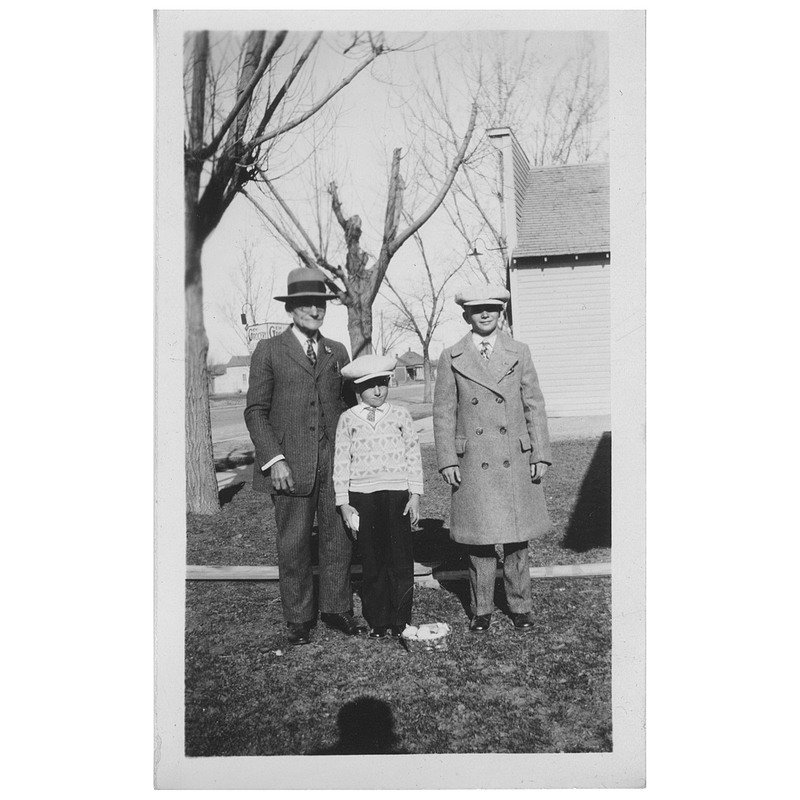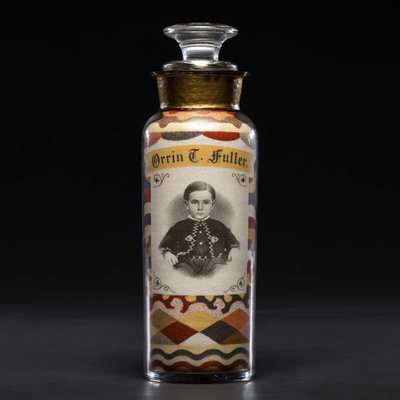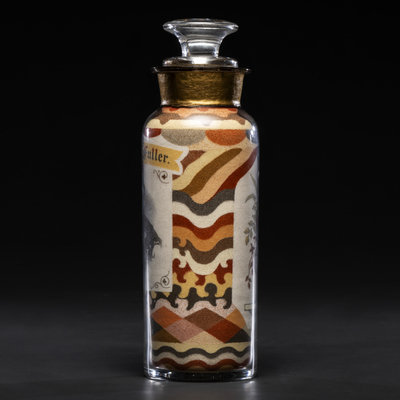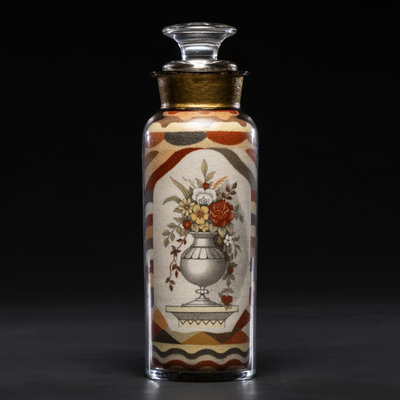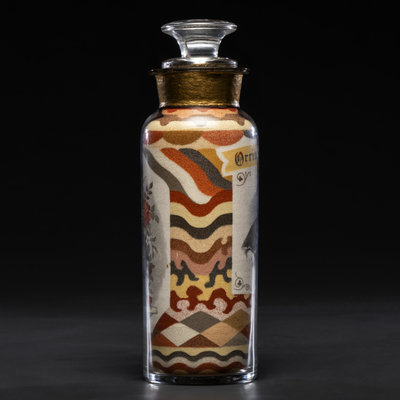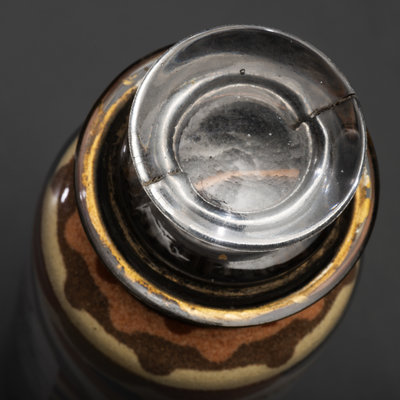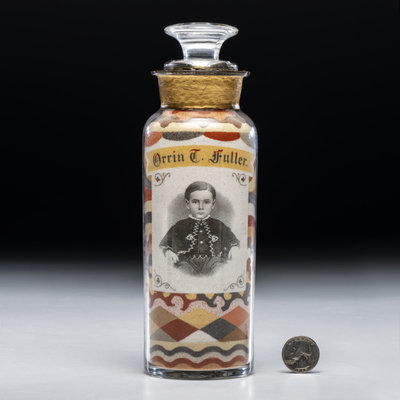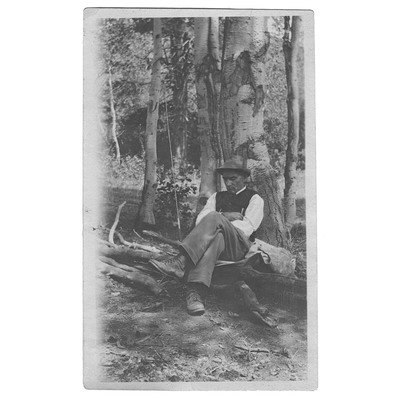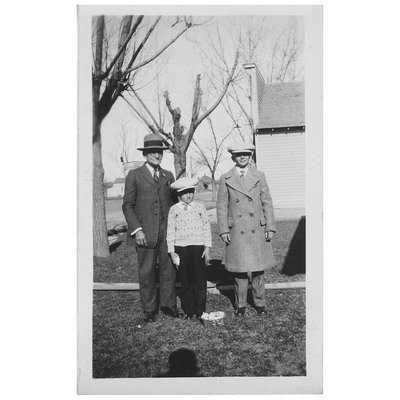Condition Report
Contact Information
Auction Specialist
Lot 292
A Rare and Important Andrew Clemens (American, 1857-1894) Portrait Sand Bottle
Sale 916 - American Furniture, Folk & Decorative Arts
Lots 1-410
Sep 30, 2021
6:00AM ET
Lots 411-816
Oct 1, 2021
6:00AM ET
Live / Cincinnati
Own a similar item?
Estimate
$100,000 -
150,000
Price Realized
$956,000
Sold prices are inclusive of Buyer’s Premium
Lot Description
A Rare and Important Andrew Clemens (American, 1857-1894) Portrait Sand Bottle
Depicting Orrin T. Fuller (American, 1859-1929).
Height 8 3/4 inches.
Accompanying the bottle is a file containing family documentation provided by O.T. Fuller’s granddaughter Ora Lee Wiseman of Twin Falls, Idaho. Included is a hand-written reminiscence dated January 2, 2021 by Ora Lee, newspaper clippings, two photographs of O.T. Fuller, and several copies of articles referencing the life and career of Angie Fuller. The bottle further includes an MP3 file containing the recording of an interview of Ora Lee Wiseman conducted on December 29, 2020.
Height 8 3/4 inches.
Accompanying the bottle is a file containing family documentation provided by O.T. Fuller’s granddaughter Ora Lee Wiseman of Twin Falls, Idaho. Included is a hand-written reminiscence dated January 2, 2021 by Ora Lee, newspaper clippings, two photographs of O.T. Fuller, and several copies of articles referencing the life and career of Angie Fuller. The bottle further includes an MP3 file containing the recording of an interview of Ora Lee Wiseman conducted on December 29, 2020.
Provenance:
Orrin T. Fuller, Twin Falls, Idaho;
to his son Orrin Ashby Fuller (1879-1977);
to his daughter, Ora Lee Wiseman, the present owner.
A large, and impressive bottle dating from the late 1880s, depicting a portrait of a young boy, and “O.T. Fuller” in script on the front side and an elaborate floral urn on the opposite. Both decorations flanked by geometric flourishes typical of those employed by Clemens. Lacking a label identifying the work as the product of Clemens, but by his hand.
Of the more than 100 documented Clemens bottles this is the only known example exhibiting a portrait. The subject is an almost photographic depiction of Orrin “O.T.” Fuller (1859-1929) of Savanna, Illinois at the age of about four or five years old. The image has a photographic quality that suggests Clemens used a carte de visite, a photo popular in the 1860s as the model.
Like a number of Clemens’ works, the “Boy in the Bottle” has remained in the Fuller family since it was made, but the occasion for its purchase is unknown. Most Clemens bottles were commissioned as gifts, and this is the most plausible explanation for this example. Though the family has no direct knowledge for why it was made, O.T.’s older sister, Angeline Fuller Fischer (1841-1925) probably is the key to understanding the circumstances of its creation.
When Angeline — or “Angie” as she was known — was 13 years old, she was stricken with whooping cough and typhoid fever that left her completely deaf and with severely impaired vision. In 1859 she enrolled at the Illinois Institute of the Deaf and Dumb in Jacksonville, where she stayed for about two years before being forced to return to Savanna because of poor eyesight.
While at Jacksonville – and encouraged by her teachers — Angie found she had a knack for writing, especially poetry. Returning to Savanna, she began writing articles for The Deaf-Mute’s Journal, fund-raising and advocating for the rights of deaf women. By 1880 -- still living at home with her parents and brother O.T. — she had become a national figure.
That same year she met her future husband at the first annual convention of the National Association for Deaf-Mutes (today’s National Association of the Deaf). In 1887 – about the same time this bottle was made - she left Illinois and moved to Nebraska where her husband was the editor of a newspaper for the deaf. It is possible that Angie used this occasion to commission “The Boy in the Bottle” as a parting gift for O.T.
Given Angie’s deafness, and her profile within the national deaf community, it is inconceivable that she would not have known of Andrew Clemens, “the deaf-mute” sand artist from McGregor, Iowa a mere 80 miles up the Mississippi from Savanna. When “The Boy in the Bottle” was made, Clemens’ fame had spread up and down the river and beyond, carried by local newspaper stories and visitors to McGregor. By the 1880s, Clemens had perfected his technique enough to print a flyer advertising prices for his work, and his bottles would have been known throughout the upper Mississippi Valley.
O.T. Fuller, the “boy in the bottle,” led a peripatetic existence for much of his adult life. Between 1870 and 1920, Federal Census records and family documents list his occupation as student, salesman for a grocer, restaurateur in Savanna, tourist hotel manager in Chicago during the 1892 World’s Fair, and accountant in Philadelphia, Pennsylvania.
Fuller moved to Twin Falls, Idaho in 1907. Sometime before leaving the bottle was exhibited in the window of his nephew R.G. Fuller’s Savanna furniture store. An undated newspaper clipping retained by the family reported:
Another article of interest in the window is a bottle containing colored sand from Grand Lake, Iowa [later corrected by an unknown hand to read “McGregor]. On one side is a picture of Mr. Fuller when he was a child. The remarkable part of this is that the picture is made of grains of sand and is a perfect likeness. That this could be done seems almost beyond belief if it were not the evidence before us.
After trying his hand at farming, and a stretch as a “watchman” O.T. died in Twin Falls in 1925. The bottle then passed to his son. Orrin Ashby Fuller (1879-1977) At Orrin’s death, the bottle passed to his daughter Ora Lee, the present consignor.
Ora Lee remembers sitting in the coat closet of the Fuller home playing with the bottle when she was a young girl: “It amazes me that the bottle survived over 100 years being handled by many people – Including children! I always thought the boy looked like my dad…Yet I have known very little about him.” A remarkable Clemens bottle, with an equally remarkable history.
